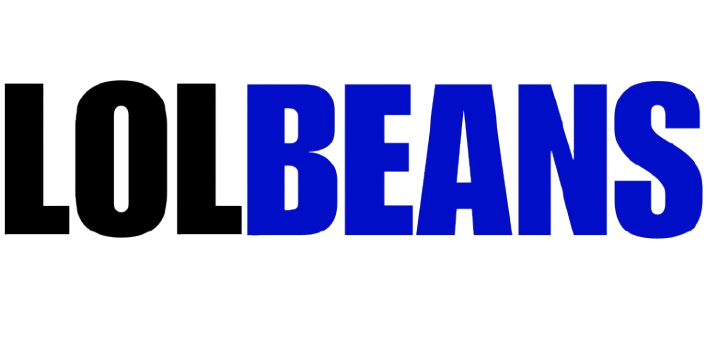Email remains the backbone of work, but it has also become one of the biggest productivity drains. Entrepreneurs drown in investor updates and client requests, while sales teams risk losing deals when key replies get buried. SMEs waste hours sorting through clutter, and large enterprises face compliance risks with misplaced or unsecured emails. For professionals in regulated industries, the stakes are even higher.
This is why smart email organizer tools are now essential. These platforms don’t just sort messages—they prioritize, automate, and secure communication to keep workflows moving. In this blog, we’ll explore the defining features of modern tools and compare the top options for 2025, so you can choose the one that best fits your business.
Key Features Defining Modern Email Organizer Tools
The best email organizers of 2025 are built for complexity. They don’t just clean up clutter; they create systems that learn, adapt, and secure. Here’s what makes them stand out.
AI-driven smart inbox prioritization
Artificial intelligence now plays a decisive role in separating signal from noise. Instead of sorting by sender or subject line alone, tools analyze intent, urgency, and even sentiment. For a sales professional, this could mean seeing hot leads at the top of the inbox. For a business leader, it might mean surfacing investor updates over routine internal chatter.
- Highlights urgent emails before routine ones
- Predicts lead quality and client intent
- Reduces distractions by clustering low-priority updates
Multichannel and multi-account integration
Most professionals handle more than one channel. Beyond email, teams rely on Slack, Teams, or WhatsApp. Modern tools integrate these channels into a single view, preventing silos. Multi-account support also matters for entrepreneurs managing multiple ventures or domains. A unified inbox saves time and reduces the risk of missed communication.
Collaborative team functions
Email has historically been a solo task, but in 2025, organizers transform it into a team sport. Shared inboxes allow seamless handoffs and prevent duplicate replies. Real-time commenting creates context without clogging threads. Role-based access ensures accountability without chaos.
- Assign messages to teammates
- Add private comments within threads
- Track and measure team response times
Security and compliance safeguards
Security has moved from “added feature” to “core requirement.” For SMEs, data privacy builds customer trust. For enterprises and regulated industries, it prevents lawsuits and fines. Tools that emphasize encryption, zero-retention, and compliance certifications have become the default choice.
- End-to-end encryption for sensitive content
- GDPR, HIPAA, and financial regulation compliance
- Zero-knowledge architecture where even providers cannot read your emails
Customizable workflows and automation
Automation now extends beyond sorting. Rules can assign tasks, create project entries, or trigger reminders. For SMEs, this reduces manual busywork. For large enterprises, it ensures processes stay consistent across global teams.
Role of AI and Machine Learning
AI no longer just learns keywords; it learns behavior. Over time, it adapts to each user’s communication patterns. A founder may find investor-related terms prioritized, while a sales rep sees leads highlighted. Predictive features also flag scheduling conflicts or time-sensitive messages, creating a contextual inbox rather than a static one.
Security as a Differentiator
Email remains the most vulnerable communication channel. The tools leading in 2025 recognize this, offering not only encryption but full transparency about storage and processing. Data residency options are now expected, letting enterprises choose where information is stored to meet regional laws. For regulated industries, this difference is often the deciding factor in adoption.
Feature Comparison Snapshot:
| Feature | Entrepreneurs | Sales Teams | SMEs | Enterprises | Regulated Industries |
| AI Prioritization | High impact | High impact | Medium | High impact | Medium |
| Multichannel Integration | Medium | High impact | High | High | Low |
| Team Collaboration | Medium | High impact | High | High | Medium |
| Security & Compliance | Medium | Medium | Medium | High impact | Critical |
| Workflow Automation | High impact | High impact | High | High | Medium |
In-Depth Comparison of Leading Email Organizer Tools
The top email organizers of 2025 each bring something distinct to the table. Here’s how they compare for different types of users.
Microsoft Outlook
Outlook remains the go-to for enterprises because of its deep integration with Microsoft 365. Beyond email, it ties directly into Teams, OneDrive, and SharePoint, making it a hub for collaboration and compliance. Its enterprise-grade security and admin controls keep it a strong choice for regulated industries.
- Best for: Large enterprises and compliance-heavy industries
- Strength: Seamless Microsoft ecosystem integration
- Weakness: Can feel heavy for SMEs or individuals
Mozilla Thunderbird
Thunderbird appeals to power users who want customization without vendor lock-in. As an open-source client, it allows add-ons for encryption, advanced filtering, and workflow tweaks. While it lacks the polish of some commercial tools, it offers unmatched flexibility for technical professionals and SMEs that value control.
- Best for: SMEs and professionals wanting full control over setup
Strength: Open-source customization and privacy features - Weakness: Limited team collaboration tools
Mailbird
Mailbird focuses on simplicity paired with app integrations. It connects with productivity apps like Asana, Trello, and WhatsApp, turning the inbox into a lightweight productivity hub. Its clean interface appeals to entrepreneurs and individuals looking to reduce clutter.
- Best for: Entrepreneurs and solopreneurs
- Strength: Sleek UI with strong third-party app integrations
- Weakness: Not built for enterprise-scale compliance
Spark
Spark shines in collaborative email. Shared inboxes, message assignment, and real-time comments make it popular with sales and customer-facing teams. It balances team features with a user-friendly interface that avoids overwhelming new users.
- Best for: Sales teams and SMEs with shared inboxes
- Strength: Collaboration-first design
- Weakness: Lacks advanced enterprise security options
SaneBox
SaneBox is a specialist in AI-powered filtering. Instead of offering a full client, it layers over existing email systems like Gmail or Outlook. Its strength lies in triaging emails into “important” and “later” buckets with high accuracy. It’s an excellent add-on for professionals buried in incoming mail.
- Best for: Professionals overwhelmed by high volumes
- Strength: Simple, effective AI-driven filtering
- Weakness: Limited beyond inbox triage
Sortd
Sortd reimagines email as a task board. Messages can be dragged into columns like “To Do” or “Follow Up.” This makes it ideal for workflow-driven teams who want emails and tasks in one visual space. It’s particularly popular with SMEs managing customer pipelines without investing in full CRM systems.
- Best for: SMEs managing client workflows
- Strength: Visual, task-based inbox management
- Weakness: Can feel too rigid for users preferring traditional inboxes
Superhuman
Superhuman positions itself as a premium choice. It emphasizes speed, with keyboard shortcuts, predictive writing, and instant search. Its AI-driven prioritization appeals to executives and founders who want faster, more focused email sessions. The high price tag makes it a niche tool.
- Best for: Executives and founders
- Strength: Speed and productivity-focused features
- Weakness: Premium pricing limits accessibility
eM Client and Zoho Mail
Both eM Client and Zoho Mail provide balance. eM Client offers a desktop-first experience with integrated calendar, contacts, and chat. Zoho Mail, on the other hand, fits well into Zoho’s larger suite, making it appealing to SMEs that already use Zoho CRM or Projects.
- Best for: SMEs and businesses tied to larger ecosystems
- Strength: All-in-one management with calendars and contacts
- Weakness: Less advanced AI compared to specialized tools
Cross-Platform Availability and User Experience
Accessibility across desktop, mobile, and web is no longer optional. Outlook and Spark excel here with polished apps for every platform. Thunderbird offers flexibility but requires setup. Mailbird and Superhuman prioritize design on desktop but are less mature on mobile. For SMEs and enterprises running hybrid teams, cross-platform parity is often the deciding factor.
Pros and Cons: What Every User Should Consider
Selecting an email organizer is about matching the tool to your needs, not chasing every feature. Each audience segment—entrepreneurs, sales teams, SMEs, enterprises, and regulated industries—faces unique trade-offs.
Usability vs. Feature Depth
- Entrepreneurs and sales pros: Lightweight tools like Mailbird or Spark keep focus sharp without adding complexity.
- SMEs: Need balanced platforms like Zoho Mail or Sortd that scale with growth but stay intuitive.
- Enterprises and regulated sectors: Outlook delivers depth, but onboarding takes longer and demands IT oversight.
Learning Curve and Onboarding
- Fast adoption: Spark works well for sales teams that need quick wins.
- Steeper learning: Thunderbird and Superhuman reward power users but slow casual adoption.
- SMEs should plan structured rollouts to ensure features actually get used.
Support, Updates, and Ecosystem
- Enterprises rely on frequent updates, admin dashboards, and vendor-backed SLAs. Outlook and Zoho lead here.
- Entrepreneurs and SMEs value responsive support over feature bulk. Superhuman provides concierge support; Thunderbird depends on community fixes.
- Sensitive industries should demand transparent compliance updates as part of the vendor’s roadmap.
Integration and Automation Limits
- Sales teams need direct CRM and scheduling integration. Spark and Mailbird fit well.
- SMEs gain from task-linked workflows. Sortd is strong here, though not enterprise-ready.
- Enterprises need ecosystem compatibility. Tools that don’t sync with ERP or compliance software lose their edge.
Trade-Offs by User Group
| User Group | Key Advantage | Common Trade-Off | Best Fit Tools |
| Entrepreneurs | Speed and simplicity | Limited enterprise-level security | Mailbird, Superhuman |
| Sales Teams | Collaboration + CRM integrations | May lack deep compliance features | Spark, Mailbird |
| SMEs | Balanced cost, features, and ease | Risk of underusing advanced automation | Zoho Mail, Sortd |
| Enterprises | Admin controls, compliance, ecosystem | Higher cost and longer onboarding | Outlook, Zoho Mail |
| Regulated Industries | Security, zero-retention, compliance | Narrower choice of vendors | Outlook, Thunderbird |
Conclusion: The Future of Email Organization and Productivity
Email organizers are shifting from passive filters to proactive assistants. The next generation will include voice-controlled commands, AI-driven scheduling, and real-time prompts that anticipate tasks before they appear on your radar.
Yet, automation alone isn’t the answer. Businesses that thrive will be the ones that balance machine efficiency with human judgment. AI can triage, sort, and predict, but it cannot replace context, tone, or relationship management that drives real outcomes.
The most productive professionals and teams in 2025 will be those who adopt tools aligned to their unique workflows. Instead of chasing every feature, they will select platforms that cut noise, protect sensitive data, and scale with their goals. Sustainable productivity comes not from more automation, but from smarter, more intentional use of the right technology.







